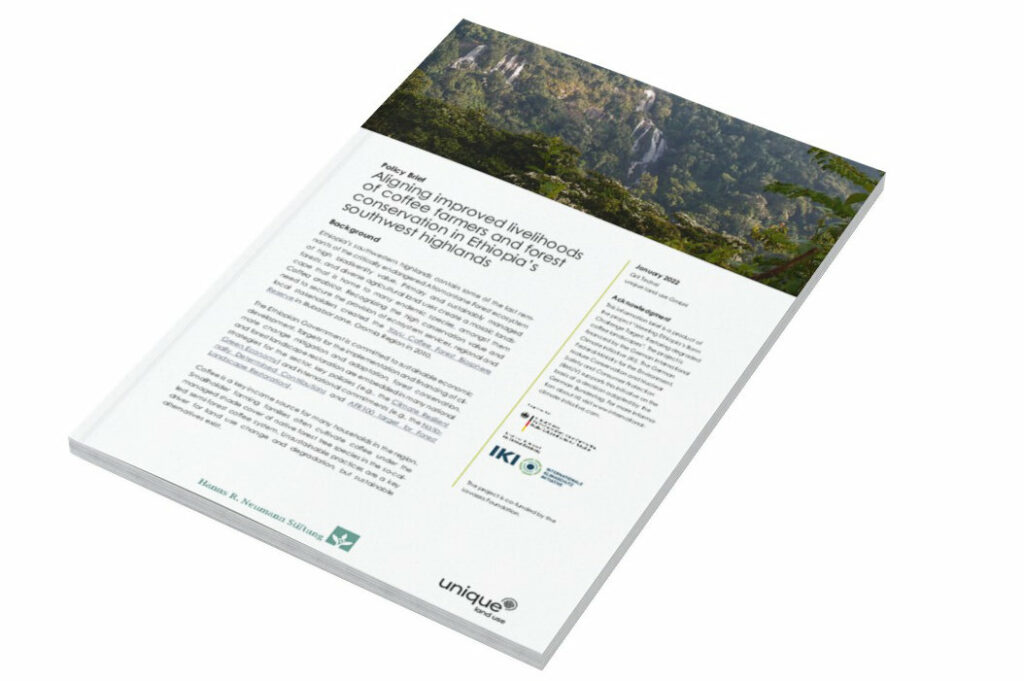Grit Techel
Background
Ethiopia’s southwestern highlands contain some of the last remnants of the critically endangered Afromontane Forest ecosystem of high biodiversity value. Primary and sustainably managed forests, and diverse agricultural land uses create a mosaic landscape that is home to many endemic species, amongst them Coffea arabica. Recognizing the high conservation value and need to secure the provision of ecosystem services, regional and local stakeholders created the Yayu Coffee Forest Biosphere Reserve in Illubabor zone, Oromia Region in 2010.
The Ethiopian Government is committed to sustainable economic development. Targets for the implementation and financing of climate change mitigation and adaptation, forest conservation, and forest landscape restoration are embedded in many national strategies for the sector, key policies (e.g., the Climate Resilient Green Economy) and international commitments (e.g., the Nationally Determined Contributions and AFR100 target for Forest Landscape Restoration).
Coffee is a key income source for many households in the region. Smallholder farming families often cultivate coffee under the managed shade cover of native forest tree species in the so-called semi-forest coffee system. Unsustainable practices are a key driver for land use change and degradation, but sustainable alternatives exist.
On the demand side, along coffee value chains and among consumers, awareness how coffee is produced is increasing notably. Consequently, global coffee value chain actors are ever more committing to source sustainably produced, zero-deforestation coffee. Initiatives like the European Union’s proposed regulation on deforestation and forest degradation free commodities are expected to further increase the need to, invest in sustainable coffee production and trade.
As a consequence, governments and value chain actors require credible evidence to demonstrate the achievement of targets, access additional finance (e.g., results-based payments), ensure access to key export markets, and document the validity of sustainable sourcing. Effective and efficient monitoring systems are needed to document successes and aid the transition from unsustainable to sustainable practices. However, a comprehensive landscape-level system for monitoring forest degradation in Ethiopia does not yet exist.
Download publication [PDF; 3,2 MB]
